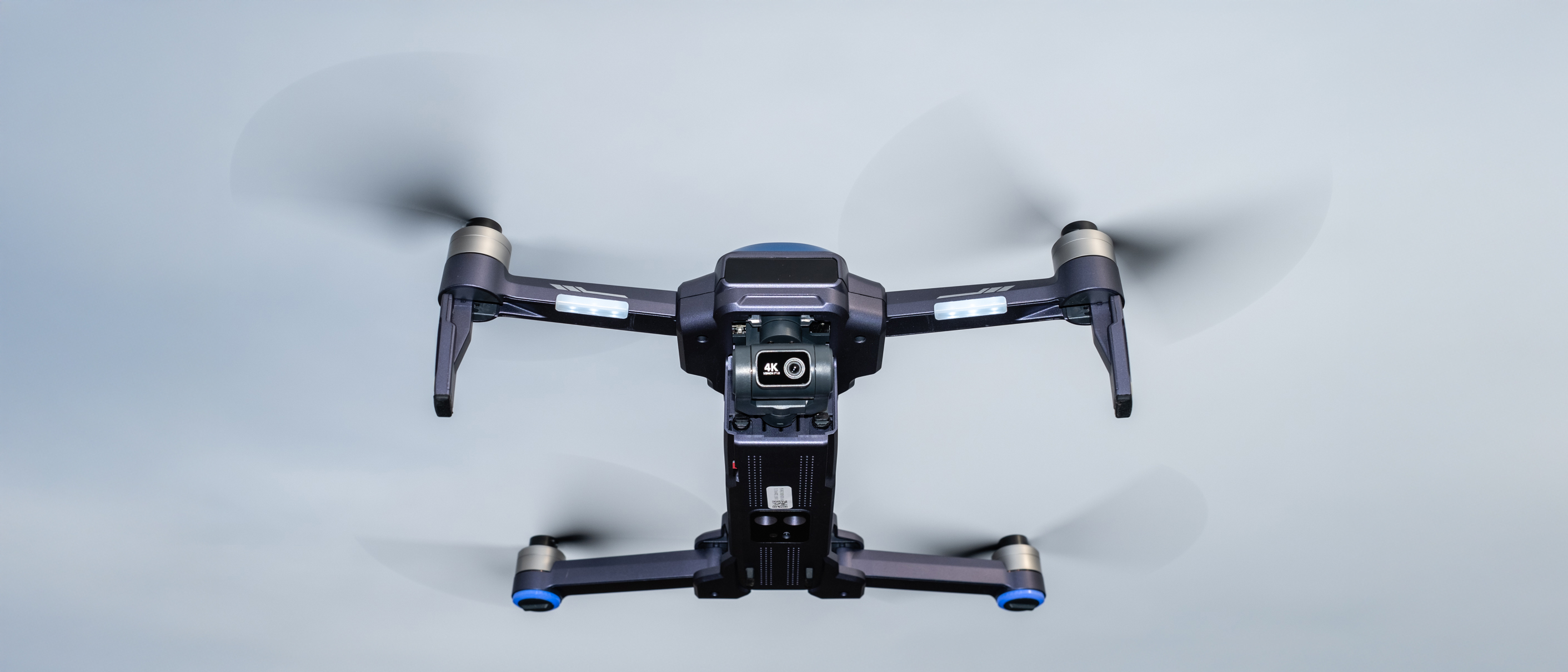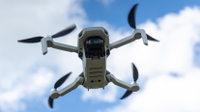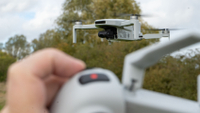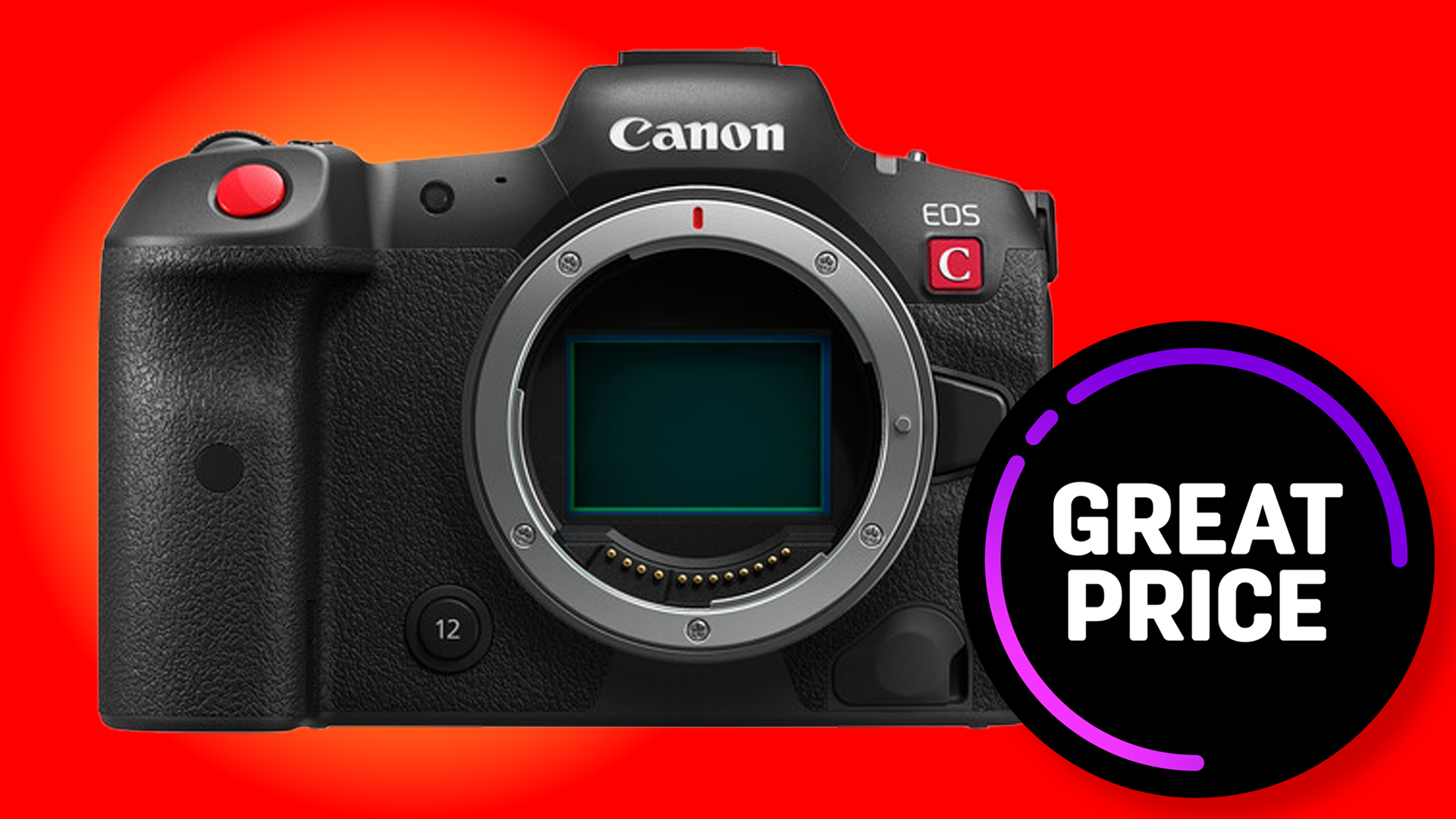Digital Camera World Verdict
The Veeniix V11PRO is a beginner drone despite having 'pro' in its name and offers the ability to capture smooth 4K video and 48MP photos. Image quality is better for video than it is for photos, but there are some quirks in this area. The feature set of the V11PRO is ultimately limited but at the same time, it has everything you'd expect from a beginner model including basic subject tracking modes.
Pros
- +
Easy to use
- +
Range basic of features
- +
Remote ID for US pilots
Cons
- -
Average image quality
- -
Vertical shooting is pointless
- -
Expensive compared to competition
Why you can trust Digital Camera World
The Veeniix V11PRO is a mid-sized beginner drone offering video capture at 4K at 30fps and 48MP photos in JPEG format. This all sounds familiar because many beginner drones can capture these resolutions, but where most models fall within the sub-250g category, the V11PRO bucks the trend with a weight of 21oz / 600g.
This drone is an upgrade of the Veeniix V11, which was extremely similar in most respects except for the camera and gimbal. The older model only offered a 2-axis gimbal with Electronic Image Stabilisation (EIS) and a poor camera, while the V11PRO sports a 3-axis mechanical gimbal combined with EIS and greatly improved image quality.
One point to make here is that both of these drones are extremely similar to the Holy Stone HS600 and HS600D, with the smartphone apps for each delivering the greatest differences between them in terms of features. With both the Holy Stone and Veeniix apps installed, you're asked which app you'd like to use when the controller and drone are connected so that does suggest they could be identical at a hardware level despite the slightly different advertised specs.
Whether or not they are the same drone rebadged makes little difference in terms of image quality and flight performance as you'd expect – they're practically identical. But read on to discover whether or not the V11PRO could be one of the best non-DJI drones, the best camera drones or the best beginner drones and is a model that you might consider.
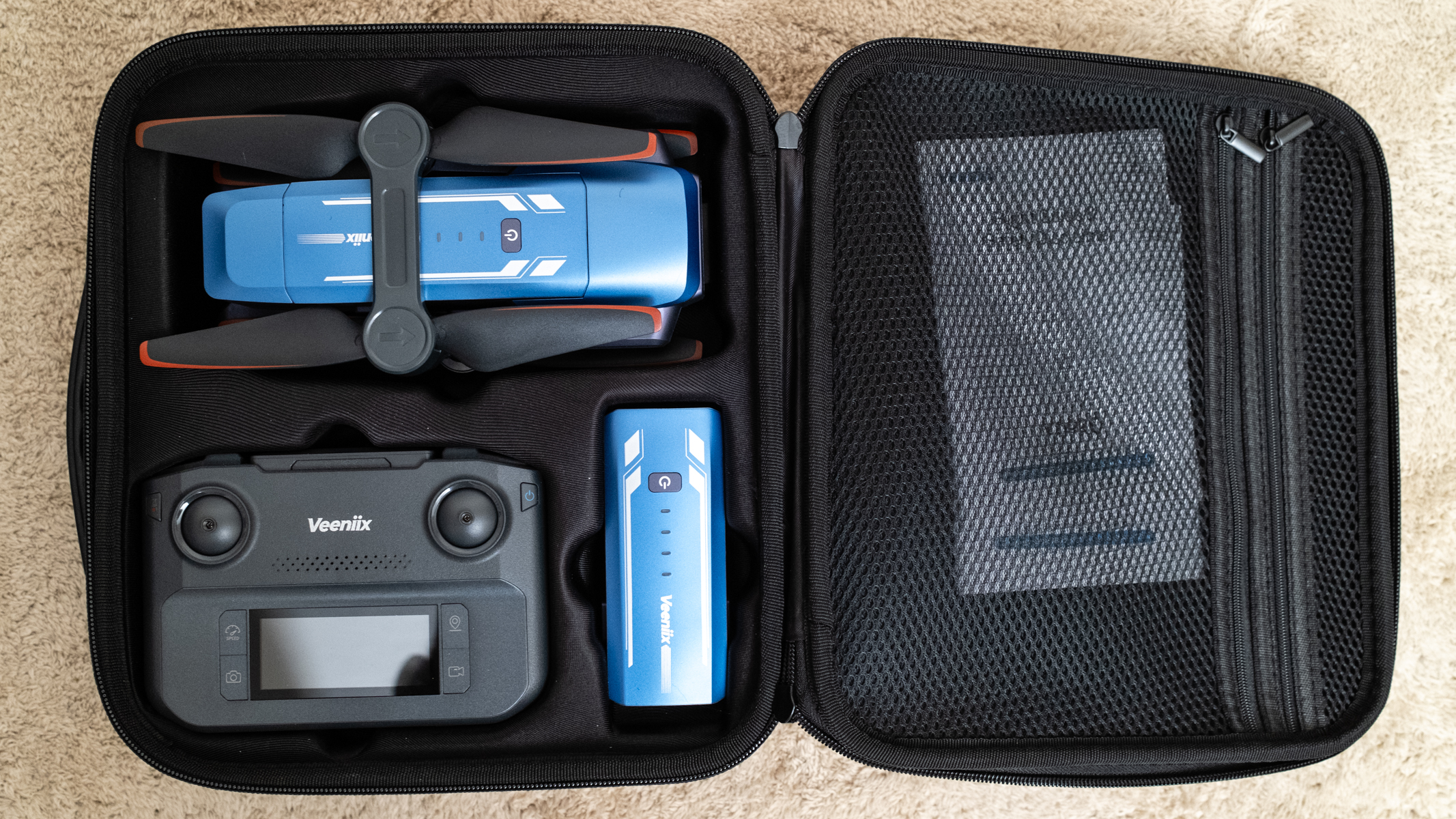
Veeniix V11PRO: Specifications
| Flight modes | Camera, Normal, Sport |
| Camera | Sony 1/2in 48MP CMOS sensor / fixed focus f/1.8 lens |
| Photo formats | JPEG |
| Video | 4K 30fps, 1080p 60fps, 720p 3fps (720p stored on phone) |
| Weight | 21oz / 600g |
| Video transmission range | 3.72 miles |
| Battery | 3500 mAh LiPo / up to 40 minutes |
| Dimensions (folded) | 7.95 x 4.21 x 3.27 in / 202 x 107 x 83mm |
| Dimensions (unfolded) | 13.8 x 13.8 x 3.27 in / 350 x 350 x 83 mm |
Veeniix V11PRO: Price
The Veeniix V11PRO is available directly from the Ruko website or from Amazon in the United States. European pilots can purchase the drone from the Ruko website while US-based pilots have the two options available.
The V11PRO costs $580 / £464, which is quite expensive for a beginner model when DJI and Potensic beginner drones are less expensive. And without going into too much detail at this point, the alternatives also produce superior image quality with, in some cases, significantly more advanced features.
The V11PRO kit includes the V11PRO drone, a controller, two batteries, two USB-C cables for charging the batteries directly, a spare set of propellers and a carry case to store and carry everything. All you need to fly the drone and control the camera is a smartphone and the Veeniix Fly app.
Veeniix V11PRO: Design & Handling
The V11PRO, as previously mentioned, looks like it may be the same drone as the Holy Stone HS600D, and as such the drones look extremely similar. The main and most obvious difference is that the V11PRO is blue and purple rather than the traditional grey of most drones, so it certainly stands out in this respect. This, of course, has no effect on performance or visibility during flight.
The drone features a simple folding design where the propeller arms fold horizontally while the large propellers sit parallel to the airframe when the drone is folded, which keeps them safe from damage. There are also two short fold-down legs on the front propeller arms to raise the front of the drone to keep the camera and gimbal off the ground. The folding design takes the V11PRO from 7.95x4.21x3.27 in / 202x107x83mm when folded to 13.8x13.8x3.27in / 350x350x83mm when unfolded with a weight of 21oz / 600g.
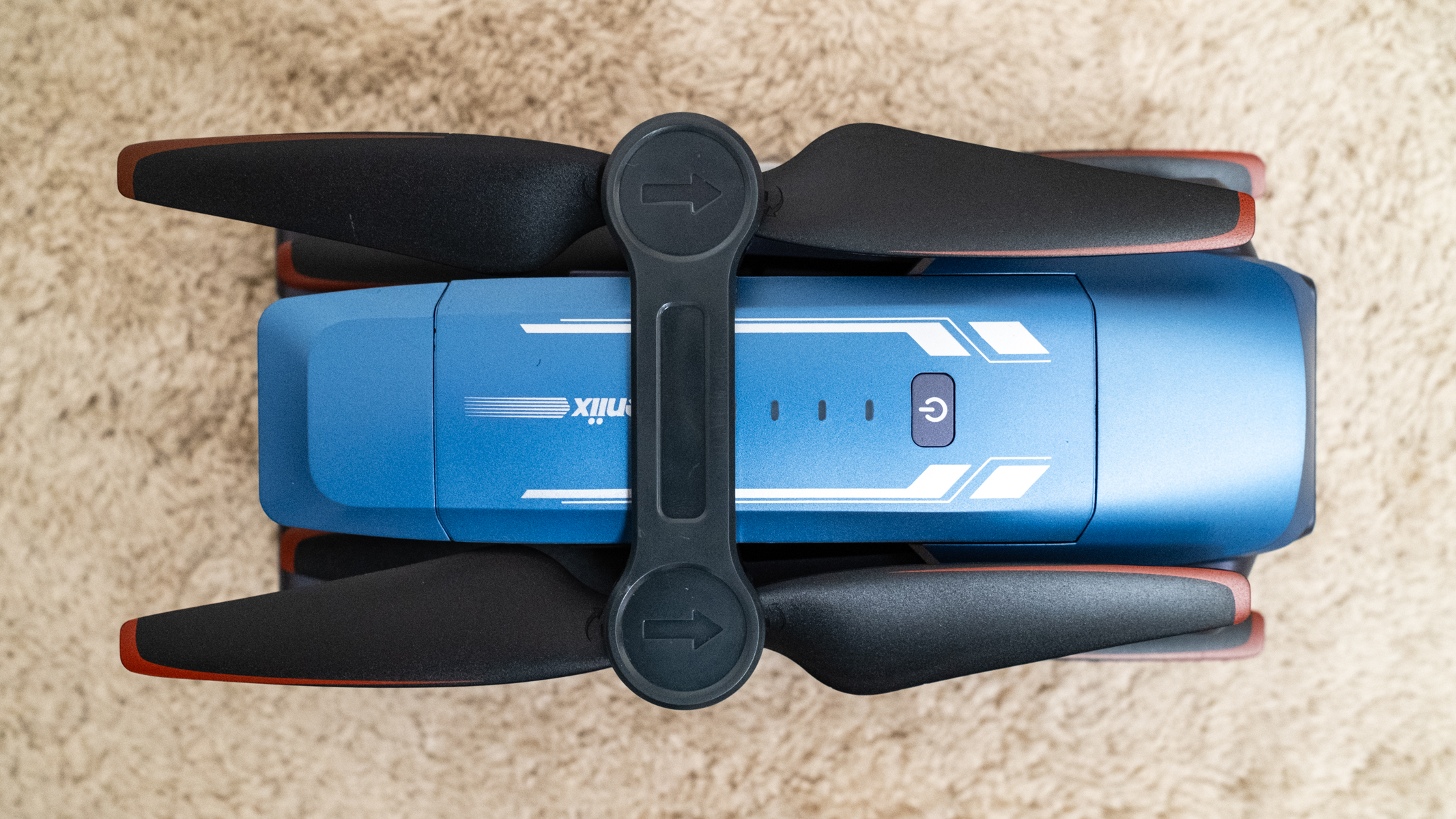
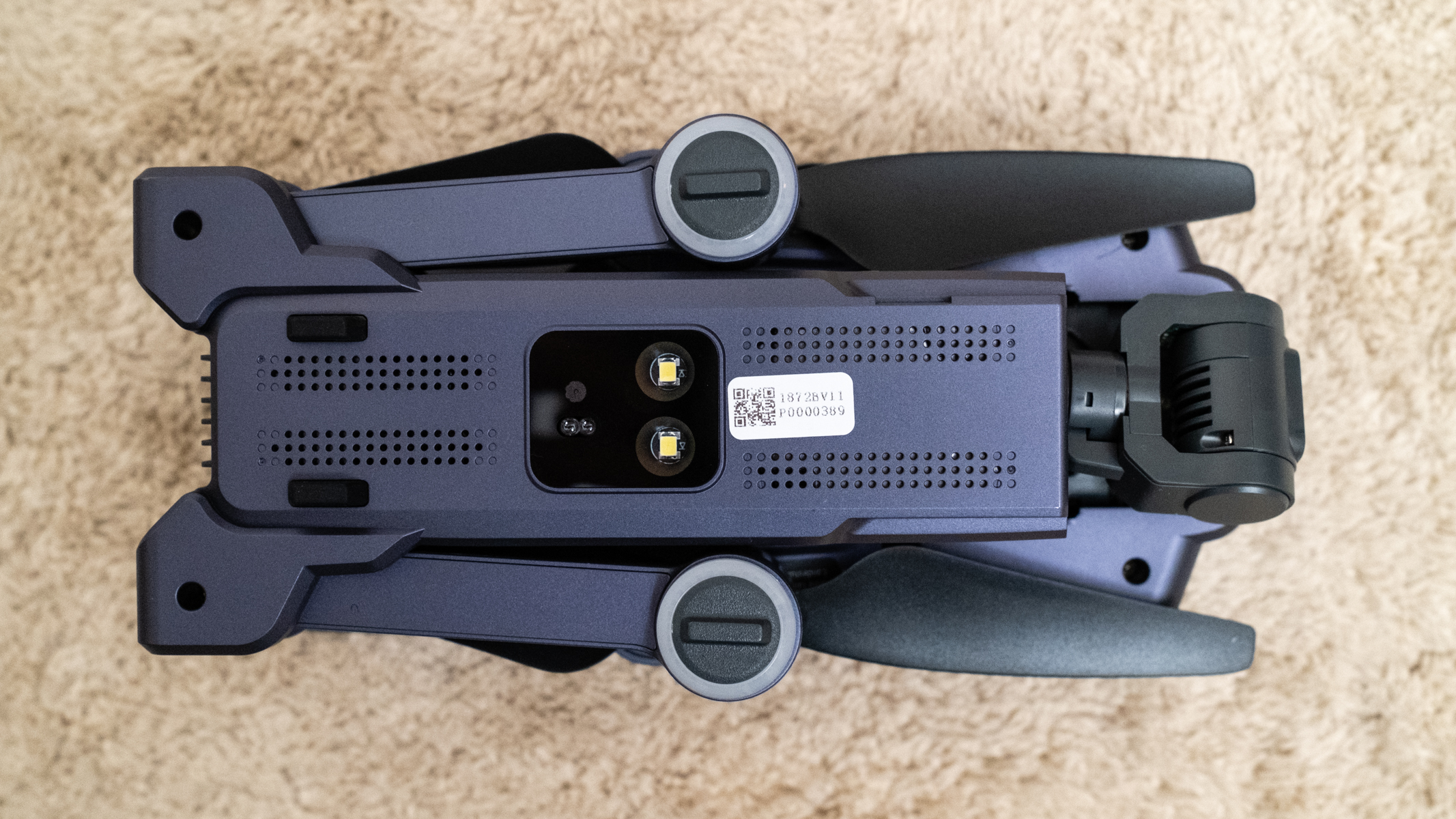
A drone of this size and weight is naturally less convenient than smaller and lighter sub-250g drones, but the most significant advantage is more power and greater wind resistance. The latter is stated as being level 5, which equates to up to 24mph, and I have no doubt the V11PRO could handle this level since 20mph gusts were no issue during flight testing.
The V11PRO controller is identical to the Holy Stone HS600D controller but in a different colour and with the relevant branding. There's a basic information screen to show flight information and a telescopic phone holder at the top where the phone cable can also be stored when not in use. The control sticks can also be removed and stowed in rubberised compartments at the bottom of the controller.
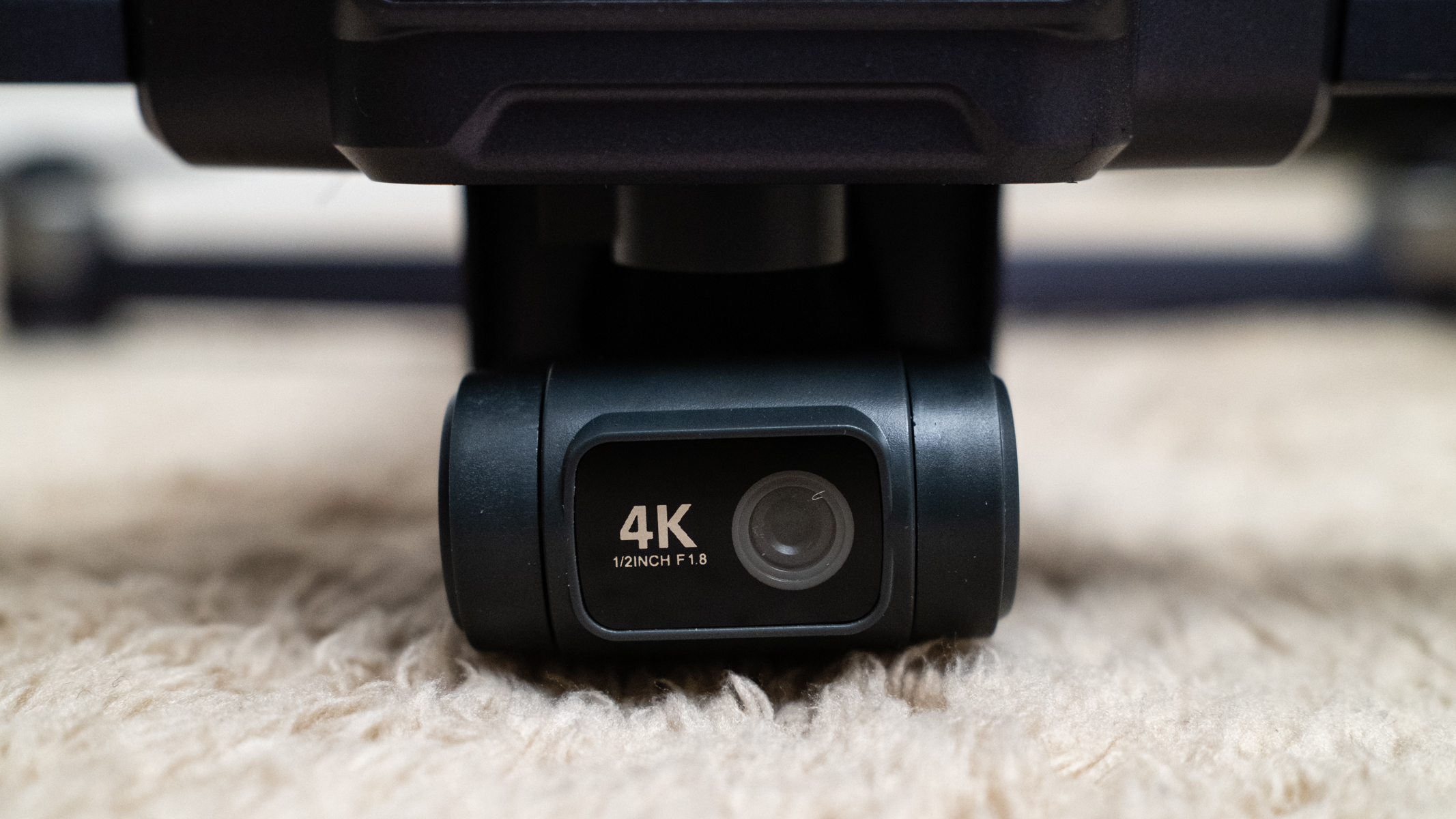
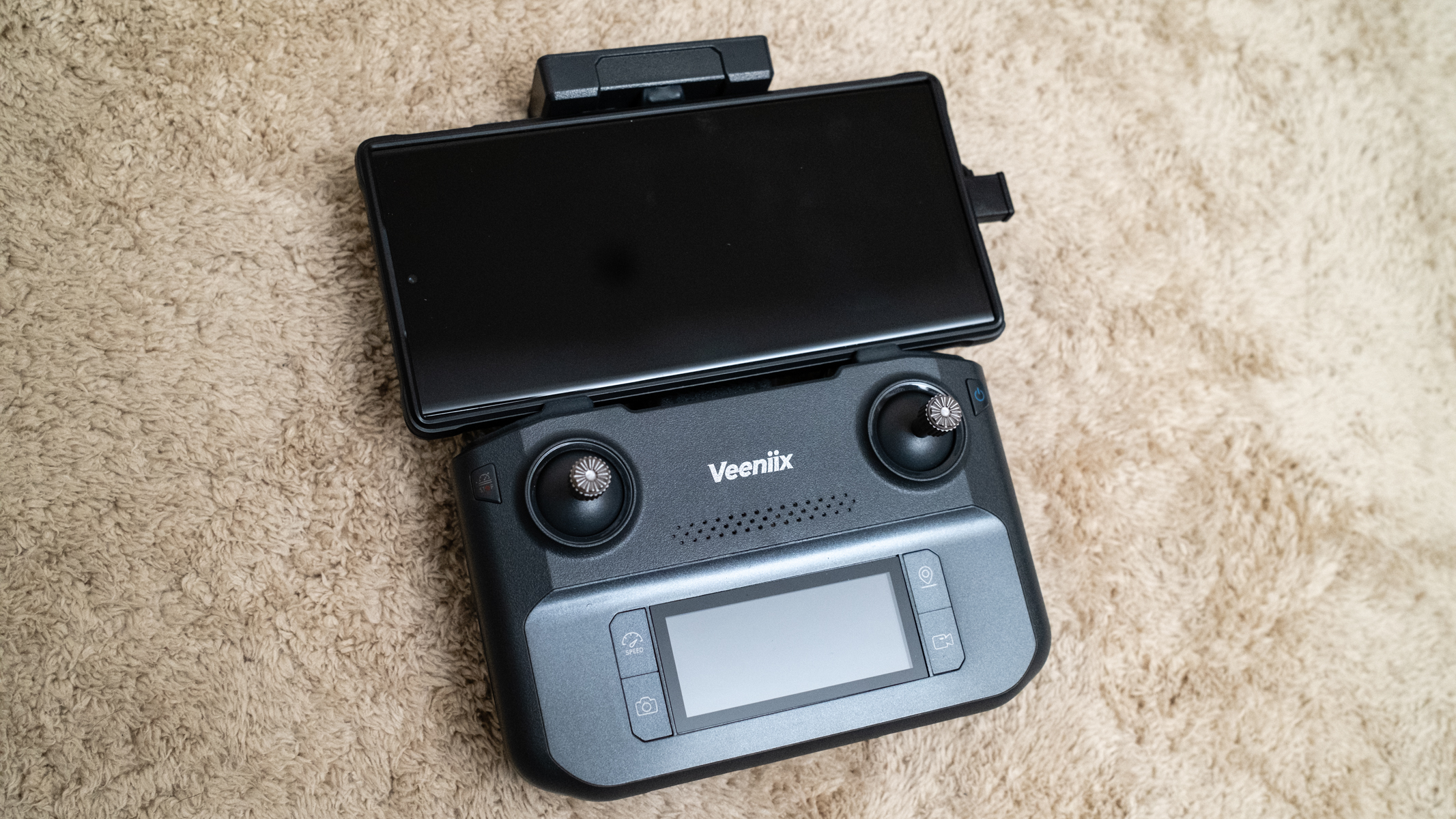
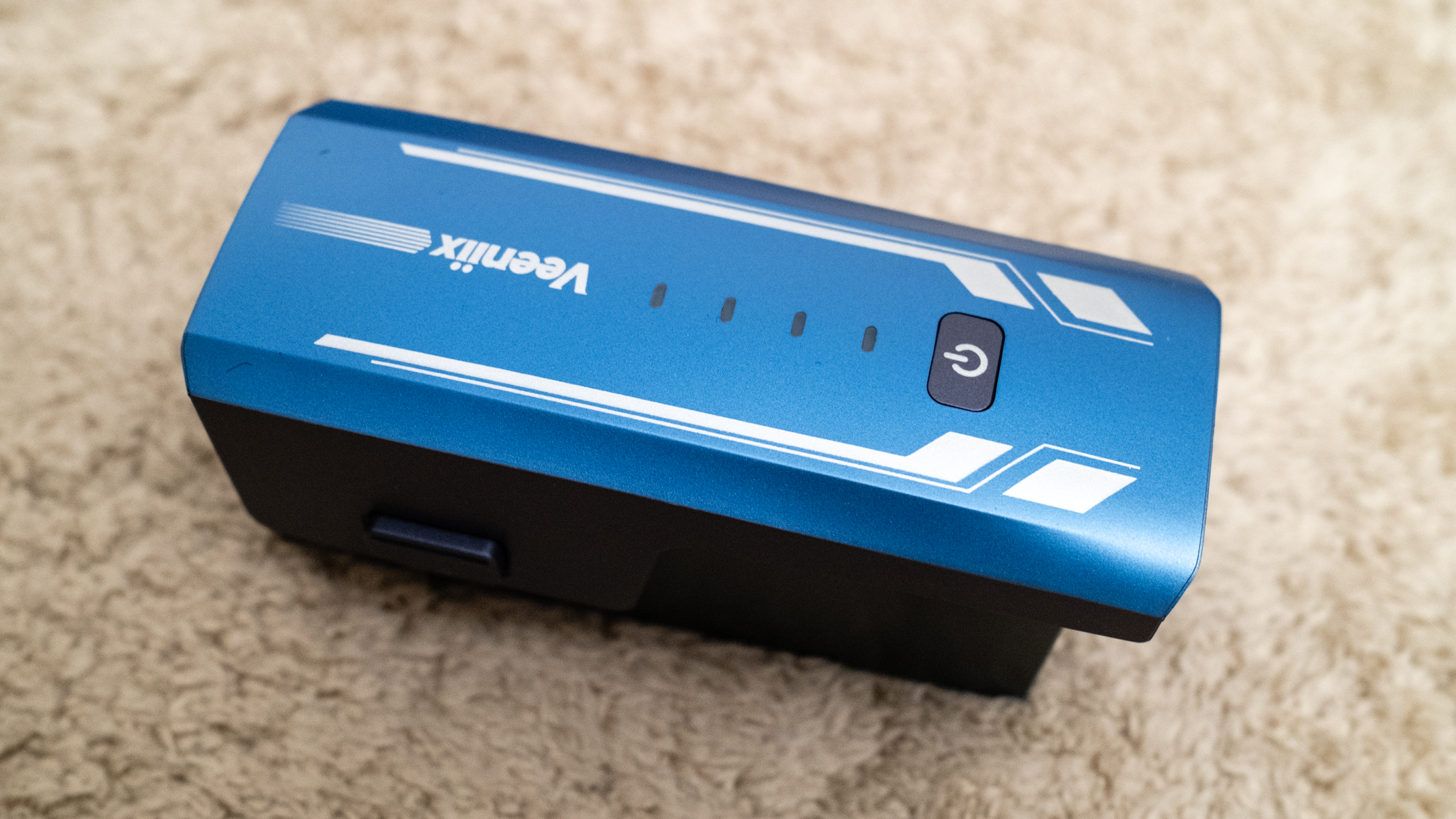
Seven direct access controls make operation more convenient by providing access to commonly used camera and drone settings and features. The controller and drone take around 30 seconds to pair, while the compass needs to be calibrated every time the drone is switched on and this takes roughly 10 seconds each time after the initial prompt.
Battery life from the 3500 mAh Li-ion batteries is advertised to provide up to 40 minutes of flight time, but during testing in UK winter temperatures around 0°C / 32°F, flight times were coming in at around 25 minutes. Warmer weather would typically see these times increase, but it's impossible to say by how much without real-world testing so a full evaluation of flight times is impossible.
Veeniix V11PRO: Drone Performance
The V11PRO is a positive flyer and the controls allow for a range of manoeuvres to be performed smoothly, not to mention the gimbal tilt is smooth which is great for video capture. In terms of features, this is a basic drone so don’t expect the latest bells and whistles, but it does include useful functions including GPS positioning, GPS Return to Home (RTH), GPS Follow and waypoints mission planning and execution.
Return to Home is a standard feature these days and you'll find it on most camera drones alongside GPS positioning. FPV drones, except for the DJI Avata / Avata 2 in certain flight modes, lack this functionality. RTH can be enabled by the pilot when required, and it's initiated automatically by the drone when the signal to the controller is lost and when the battery charge is low for safety.
One thing to watch out for with any drone when using RTH is the potential for collisions with obstacles. Drones that have collision avoidance take advantage of sensors to detect obstacles and avoid them, although since the V11PRO doesn’t have this feature you'll have to be sure that the RTH altitude is set correctly and keep an eye on the drone and the camera feed as it returns.
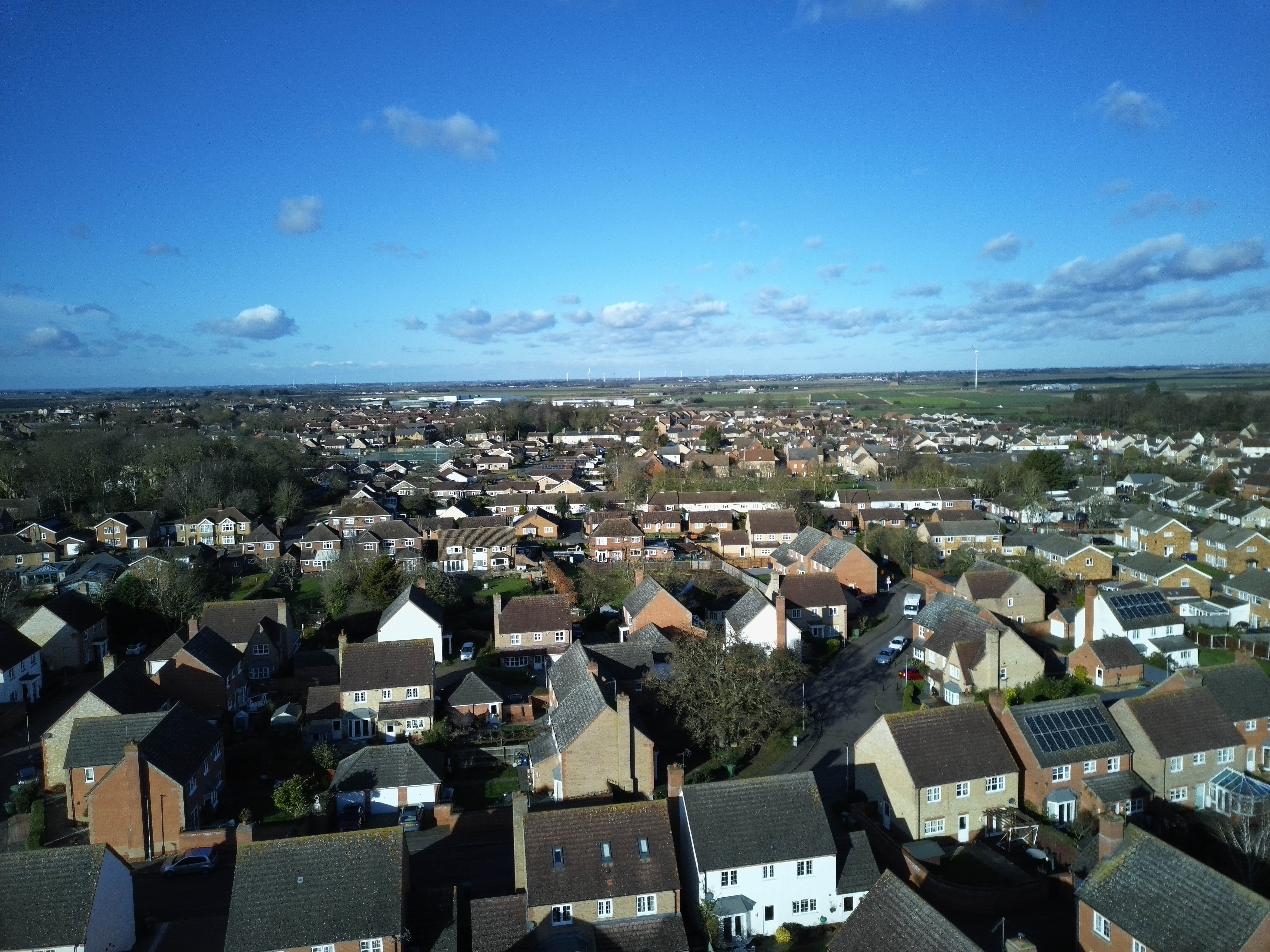
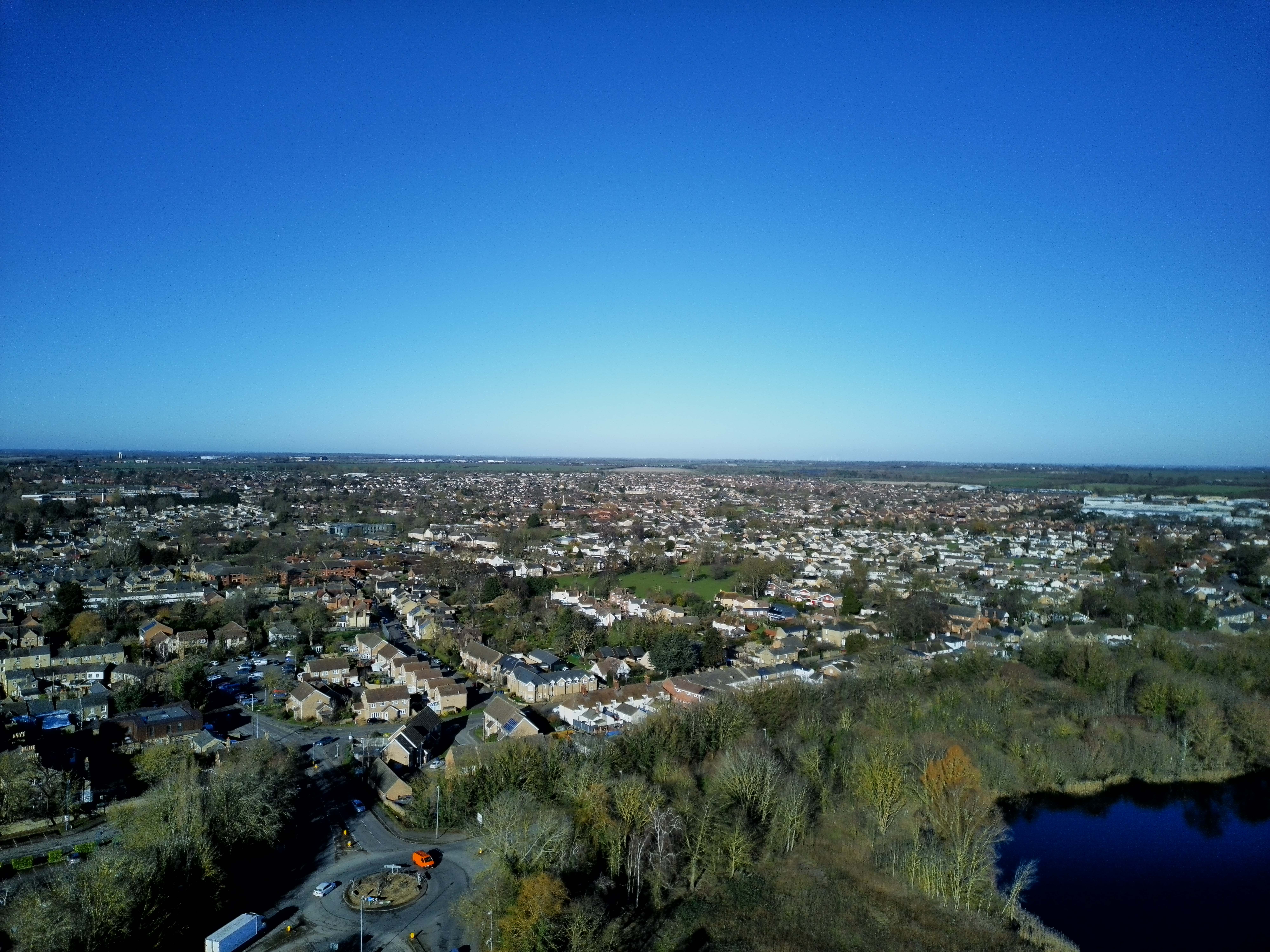
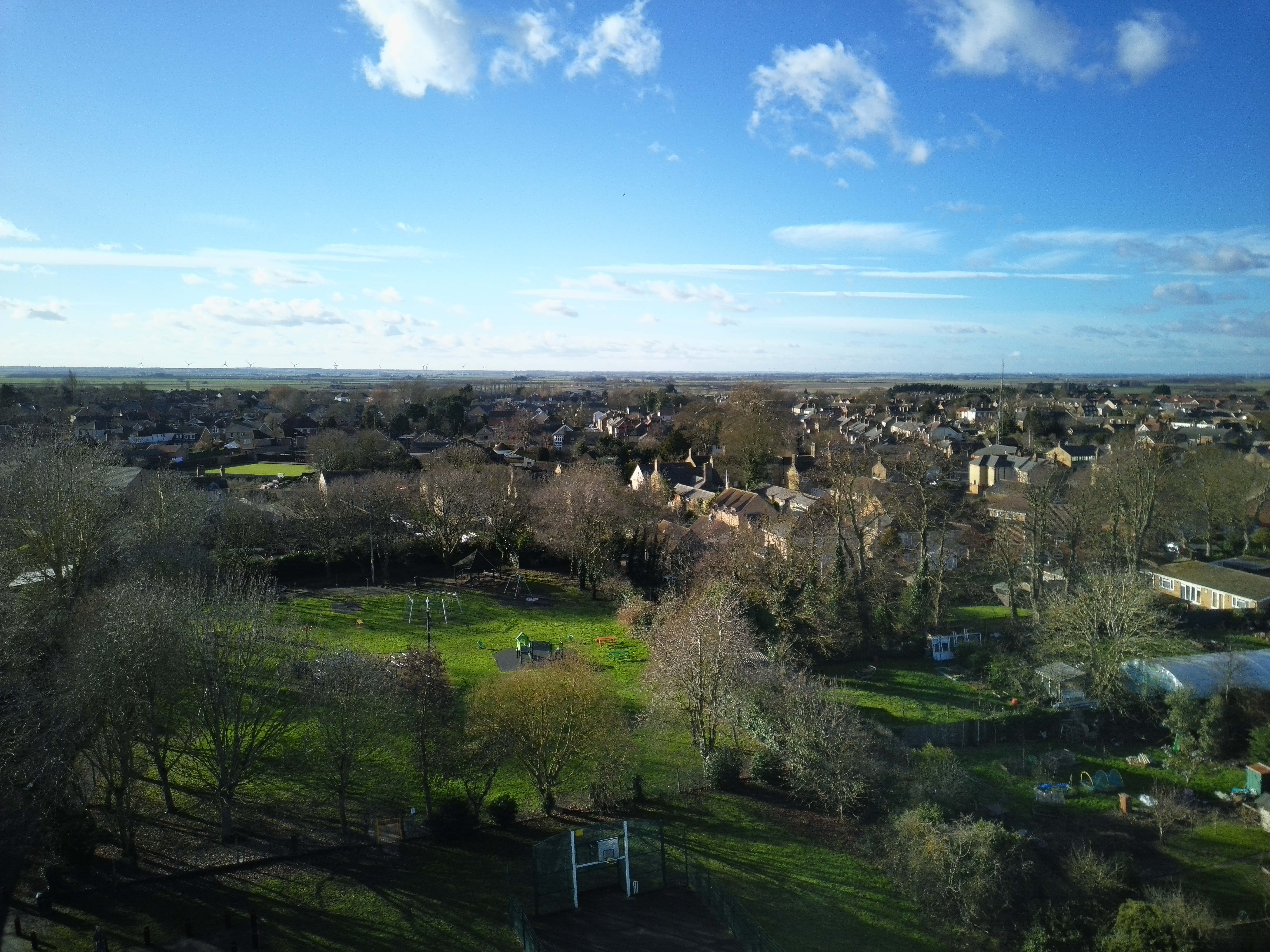
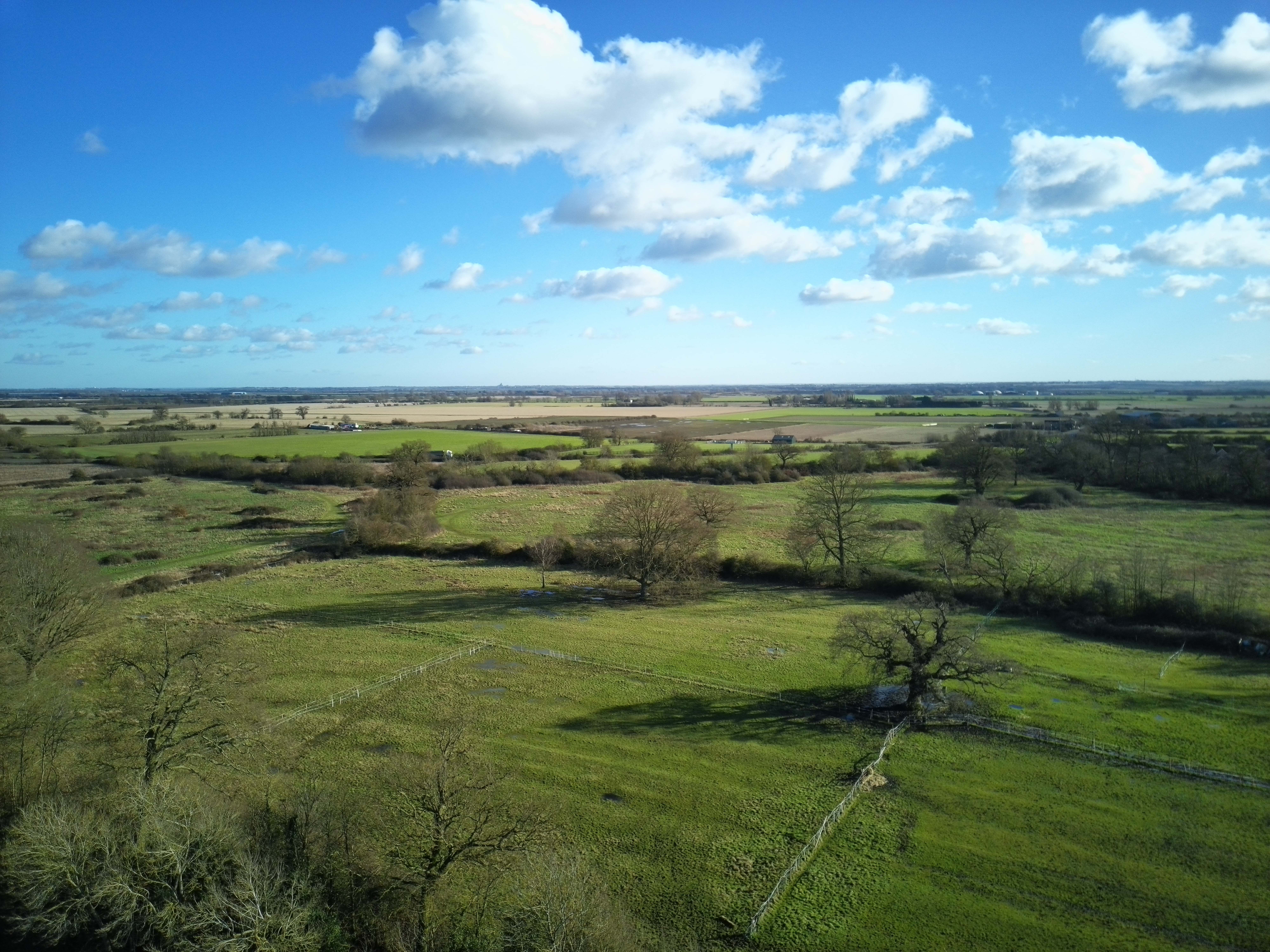
Other safety features include a TOF sensor, an ultrasonic module and night navigation lights on the underside of the airframe. The TOF sensor detects the ground during low-level flights for positioning when a GPS signal is unavailable and assists during landing. The downward-facing navigation lights can be switched on and off by pressing the shutter button on the controller for three seconds and can be used to aid landing in low light. There's also a built-in Remote ID for US pilots to comply with FAA rules.
The V11 offers a feature menu that includes Interest point (orbit), Music (for adding music that's included in the Veeniix Fly app), VR (for split-screen recording), Gesture Control, Filter (effects), Zoom (digital zoom) and Switch (vertical shooting). Other more useful features within this menu are GPS Follow, which uses the GPS signal from your smartphone to track you, and Image Follow where you select a subject for tracking. Both work fairly well, but they're not the most effective examples of this functionality available.
Switch is for vertical shooting of photos and videos, which is becoming an increasingly popular feature for drones due to the popularity of upright imagery for social media. Unfortunately, with the V11PRO it's a poor application of vertical shooting. Switch is ultimately ineffective because landscape format photos and videos are saved to the microSD card in the drone, and 720x540px video and square rather than portrait format photos are saved to your smartphone.
Veeniix V11PRO: Camera performance
The V11PRO features a 48MP Sony 1/2in CMOS sensor while the camera has a fixed f/1.8 aperture. The camera is almost point-and-shoot and can be used as such, but control is possible over a handful of basic settings including white balance, sharpening, contrast, saturation and exposure value (EV).
Exposure value and white balance are the most useful, although with EV what you see in the app camera view isn't a perfect representation of how captured photos and videos will look but it remains a useful adjustment. There's also a 'Restore default setting' button that resets any adjustments made in the settings menu.
Photos and videos are captured both on the microSD card that's inserted into the drone and also on your smartphone in a smaller format. With the latter, it's important to know that this is happening because over time it will inevitably eat up your phone storage. For some people, having lower-resolution photos and videos saved to their phone will be useful for sharing on social media, while for others it might be an unnecessary hassle since there's no option to switch it off.
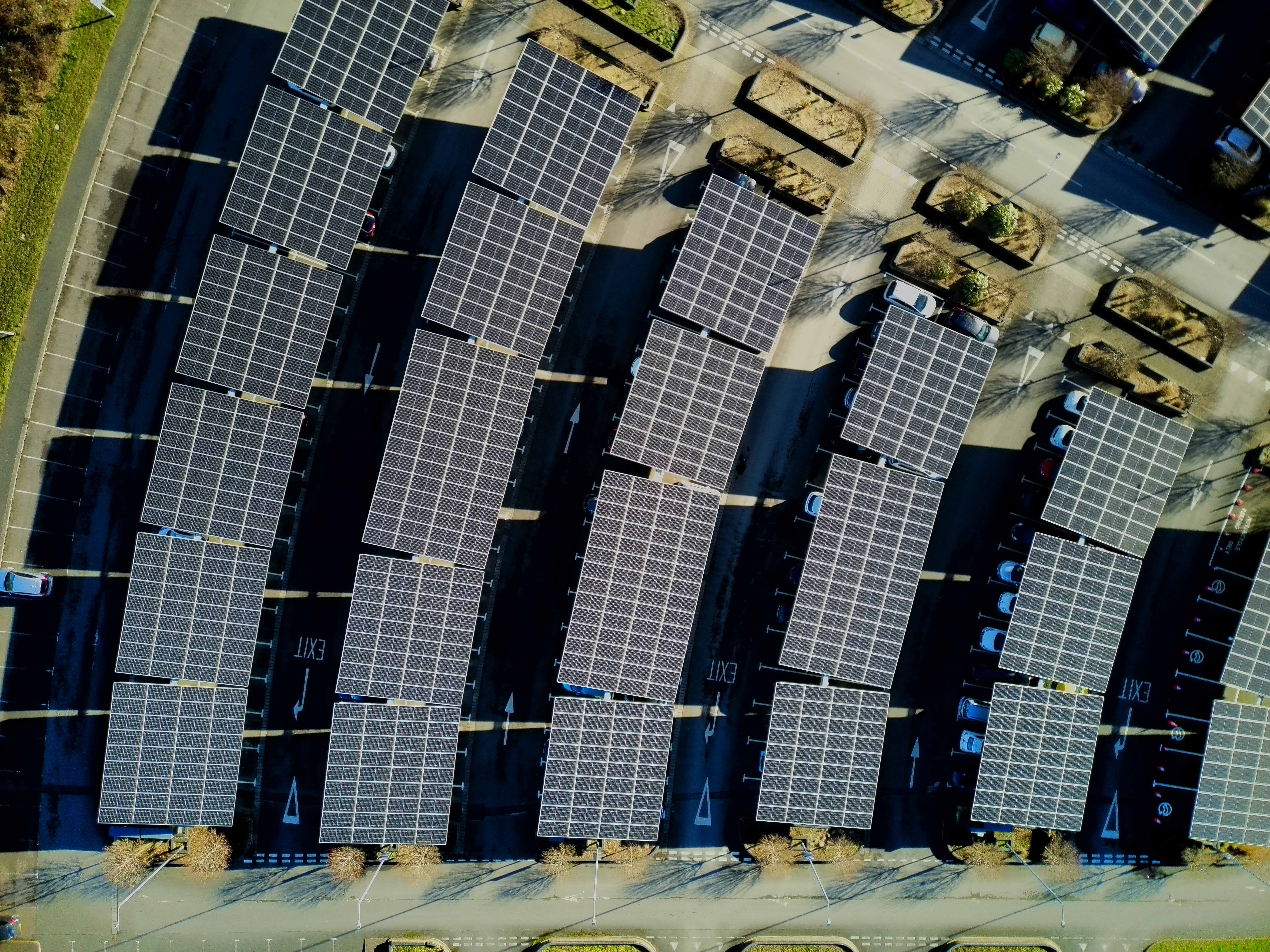
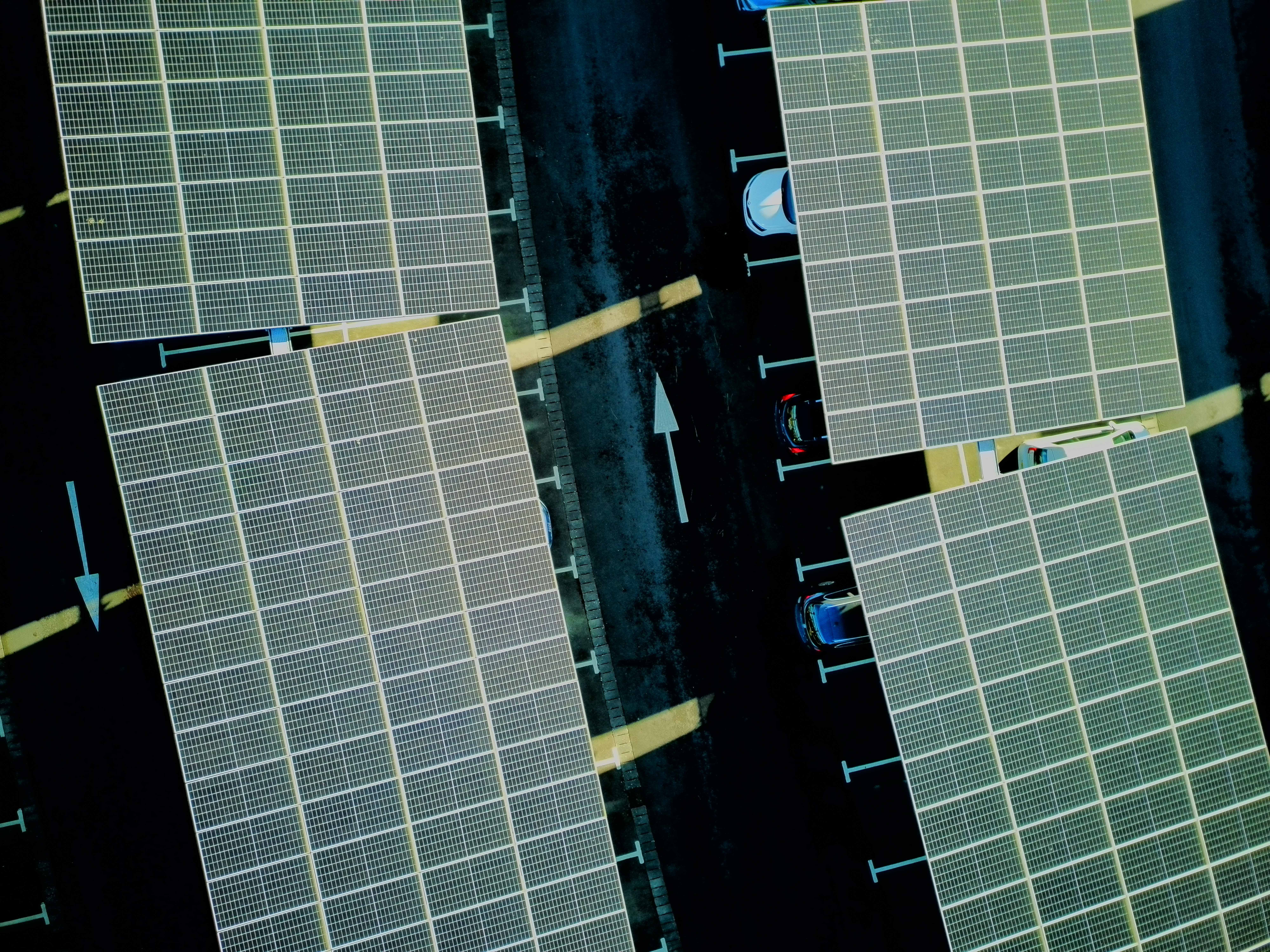

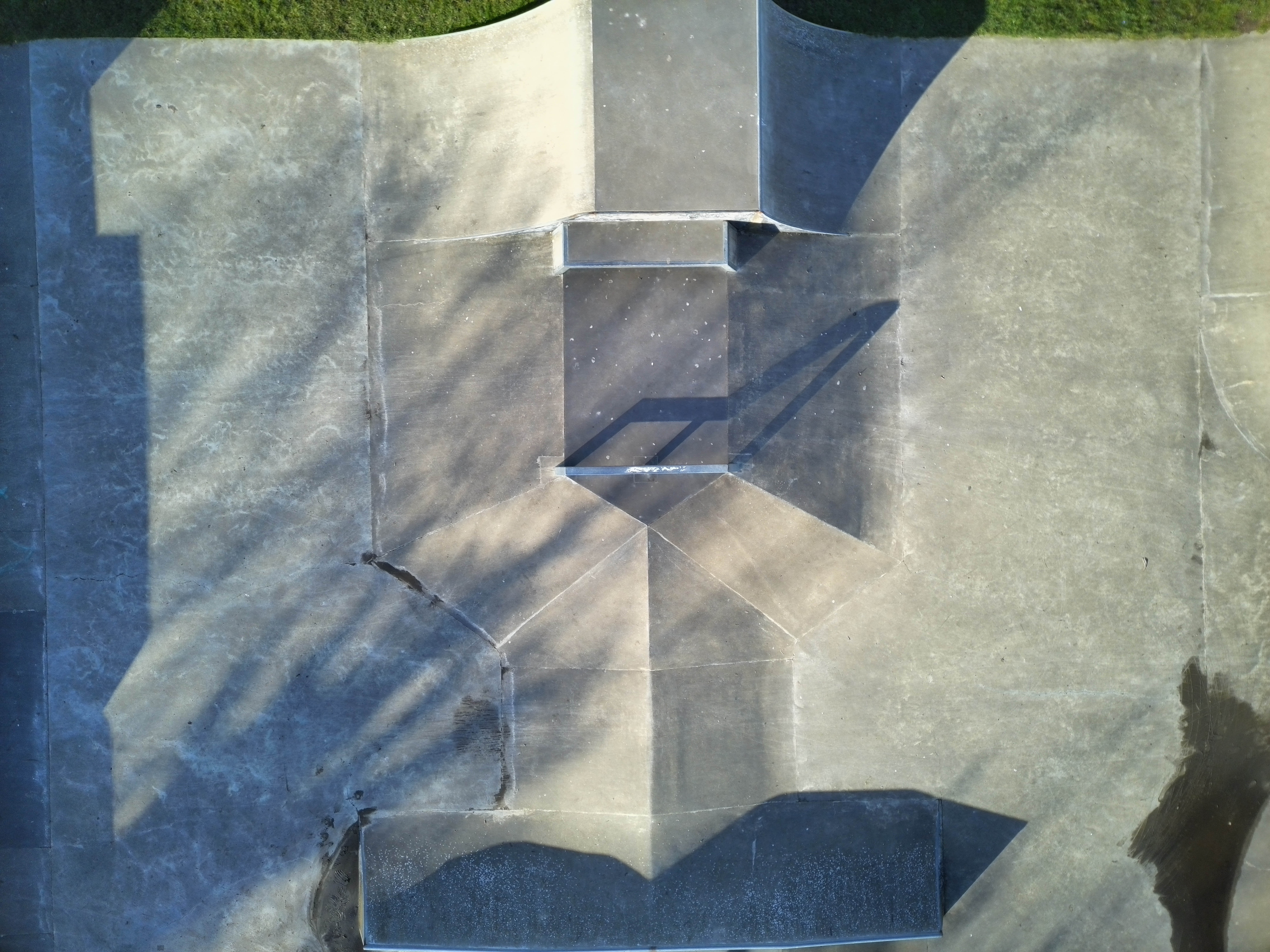
On the microSD card, photos are captured at 48MP with dimensions of 8000x6000px, while video can be captured in 4K at 30fps or 1080p at 60fps with no other resolution or framerate options available. This will suffice for beginners so no major issues here. When it comes to photos and videos transmitted to your smartphone, photos are saved in 4K dimensions (3840x2160px), while video is saved at 720p at 30fps.
Like most consumer drones, image quality is highest when shooting takes place in brighter conditions. The centre of the frame is also noticeably sharper with a gradual reduction in sharpness towards the edges. There are a couple of slight issues, however, and these are that there appears to be camera shake in some photos despite a fast shutter speed when checked in photo editing software, and there's also a noticeable fall-off in depth-of-field in deeper scenes. Video quality is much more forgiving than photos, and the depth-of-field fall-off is less visible, so it's fair to say that the V11PRO is better for capturing video than photos.
Veeniix V11PRO: Verdict
The Veeniix V11PRO performs pretty much identically to the Holy Stone HS600D, which makes sense since they appear to be the same drone rebadged. The main difference is the functionality available through the two different apps. The V11PRO is undoubtedly a beginner drone despite having 'pro' in its name, but the larger size and greater power than sub-250g drones do mean that it has some advantages despite being more restricted in most regions than lighter-weight drones.
The feature set of the V11PRO is ultimately limited but at the same time, it has most of what you'd expect from the average beginner model such as some basic subject tracking modes. The biggest problem it ultimately faces is that there are smaller, less and similarly expensive beginner models available with superior features and cameras, although they are typically less powerful.
| Features | Basic features and some are ineffective such as vertical shooting. | ★★★☆☆ |
| Design | Offers a basic folding design with reasonable build quality. | ★★★★☆ |
| Performance | Flies well, and battery life is fairly good in winter temperatures. | ★★★★☆ |
| Value | You can buy superior beginner drones for the same price or less. | ★★★☆☆ |
Alternatives
DJI Mini 4K
The DJI Mini 4K is DJI's most inexpensive sub-250g drone that can capture 4K video. Image quality is impressive for the price making it an attractive option for beginner pilots on a budget. Read the full review...
Potensic Atom
The Potensic Atom is a small drone capable of capturing 4K video and photos in JPEG and Raw format. Image quality and flight performance are above the V11PRO despite its sub-250g weight. Read the full review...
James Abbott is a landscape and portrait photographer based in Cambridge. He’s also an experienced photography journalist specializing in camera skills and Photoshop techniques. He is also a CAA-approved drone pilot and professional aerial photographer.
You must confirm your public display name before commenting
Please logout and then login again, you will then be prompted to enter your display name.
